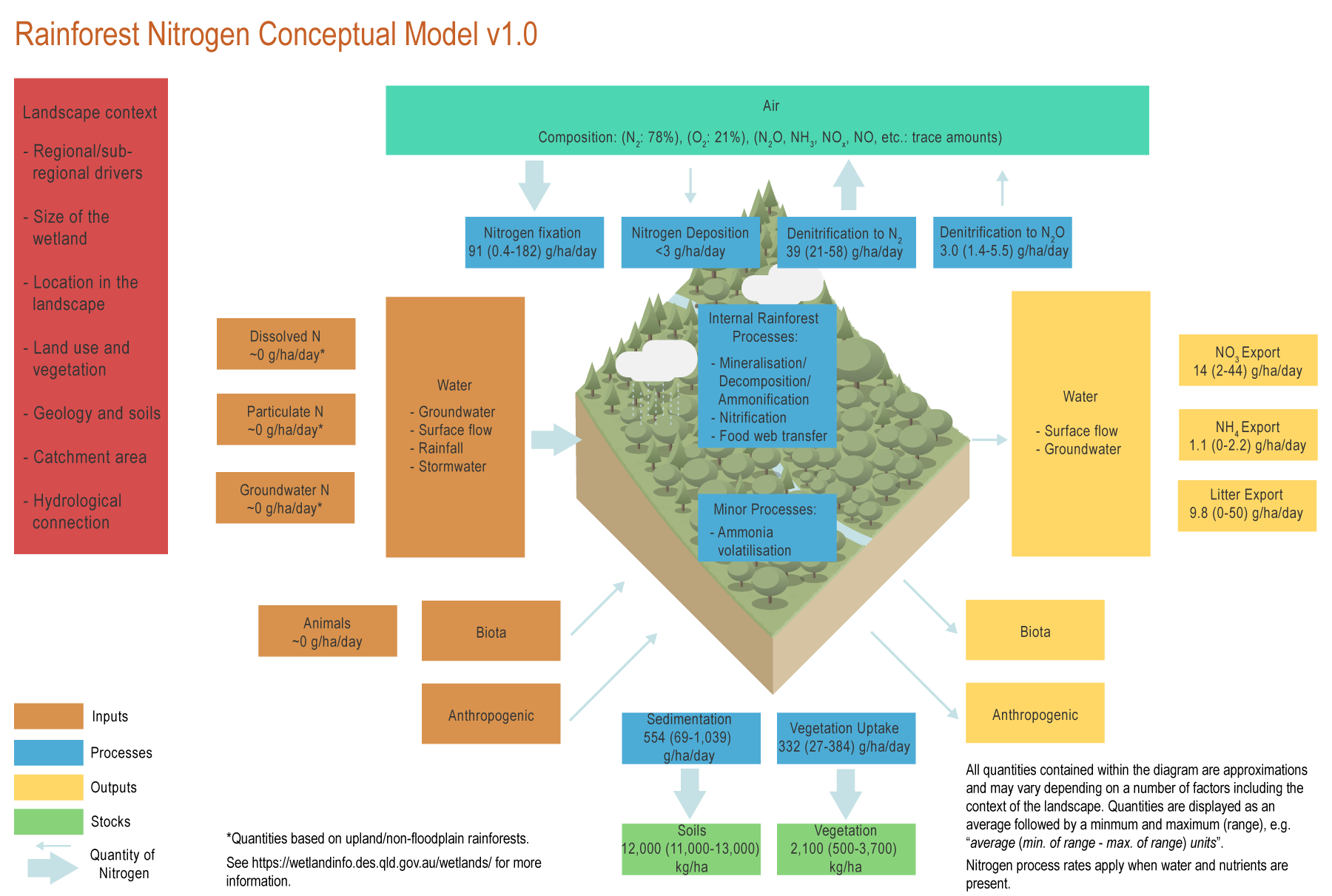|
|
RainforestRainforest – Outputs
The conceptual models were compiled by researchers in collaboration with a wide range of stakeholders from Natural Resource Management groups, universities and government agencies and based on available scientific information[1]. Click on elements of the model or select from the tabs below Most of the N within a rainforest is recycled within it and little is exported[6]. Outputs of N from rainforests are mainly the release of gaseous nitrogen through denitrification and N2O production, and the export of DON and litter. AirDenitrificationDenitrification is higher in wetter rainforests, and will cause the release of gaseous N[5]. N2O productionExport of nitrogen as N2O is likely to occur as a result of incomplete denitrification and nitrification. Less than 0.2% of denitrified N is converted to N2O[4]. N2O emissions are higher in mature forests compared to secondary forests[3]. WaterVegetation litter and dissolved N exportLitterfall in rainforest areas of the Great Barrier Reef has maximum values (44% of the total) falling in the spring and minimum in the winter[1]. Most of the litterfall is recycled within the rainforest[6], but some of it is exported to streams and waterways with values of approximately 9.8 (0-50) g/ha/day*[1]. Small amounts of N as dissolved organic nitrogen (DON) or litter from rainforests can be leached[2]. *Nitrogen quantities are displayed as an average followed by a minimum and maximum (range), e.g. “average (min. of range - max. of range) units”. References
Last updated: 2 August 2021 This page should be cited as: Department of the Environment, Tourism, Science and Innovation, Queensland (2021) Rainforest – Outputs, WetlandInfo website, accessed 15 December 2025. Available at: https://wetlandinfo.detsi.qld.gov.au/wetlands/ecology/processes-systems/nitrogen-concept-model/rainforest/outputs.html |

 — Department of the Environment, Tourism, Science and Innovation
— Department of the Environment, Tourism, Science and Innovation

